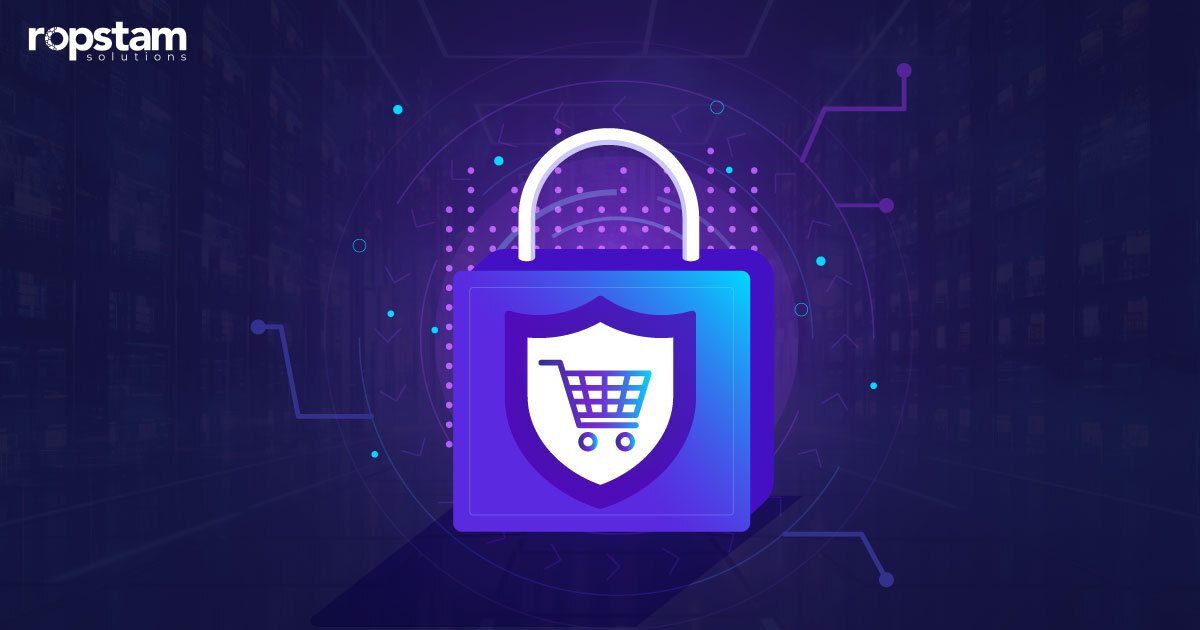As an ecommerce business owner, protecting your customers’ data and safeguarding your store against common fraud should be a top priority. You must take these security threats to your ecommerce site seriously and leverage varying fraud management systems to forestall cyberattacks.
This comprehensive blog helps you identify common types of ecommerce frauds and scam tactics. This guide will also provide strategies to combat these financial crimes effectively.
What is ecommerce fraud?
Ecommerce fraud is a type of cybercrime that happens during online transactions of customers. Fraudsters manipulate customers and ecommerce businesses to illegally exploit the online retail space, obtain personal and financial information, or execute fraudulent transactions for their own benefit.
This form of fraud can lead to serious financial losses for both customers and ecommerce store owners. These ecommerce scams can severely damage the reputation of the affected industries and businesses.
What are different types of ecommerce fraud and how do they work?
It is no surprise that commerce has revolutionized the way we shop and conduct business. However, as the popularity of online transactions continues to soar, so do the risks associated with ecommerce fraud.
From this perspective, such insidious threats have become a formidable challenge for online shopping businesses, posing serious financial and reputational consequences. By understanding the various types of ecommerce fraud and their modus operandi, businesses can fortify their defenses and thwart cybercrimes.
1. Identity theft
Identity theft is a heinous form of ecommerce fraud that strikes at the heart of consumer trust. In this scenario, cybercriminals exploit personal information, such as names, addresses, and credit card details, to impersonate unsuspecting victims and make unauthorized purchases or open fraudulent accounts. The acquisition of this sensitive data can occur through various nefarious means, including data breaches, phishing attacks, and social engineering tactics.
Once armed with this crucial information, fraudsters can wreak havoc, leaving a trail of financial devastation in their wake. Businesses across industries, from online retailers to subscription services and financial institutions, are at risk of falling prey to this insidious form of fraud.
Financial losses
The immediate financial losses from identity theft can be substantial, including costs related to chargebacks, refunds, and potential fines or penalties imposed by regulatory authorities. Businesses may also incur significant expenses for investigating and resolving identity theft incidents, hiring cybersecurity experts, and implementing additional security measures to prevent future breaches.
These cumulative costs can severely impact a company’s profitability and financial stability, potentially leading to layoffs, reduced investments, or even bankruptcy in severe cases.
Damage to brand reputation
Beyond direct financial impacts, businesses may suffer irreparable damage to their brand reputation when customers fall victim to identity theft through their services or platforms. News of such incidents can spread rapidly through social media and news outlets, tarnishing the company’s image and eroding consumer trust.
Regaining this lost trust can be a daunting task, requiring substantial investment in rebuilding the brand’s credibility, implementing robust security measures, and launching extensive marketing campaigns to restore customers’ confidence.
Erosion of consumer confidence
When customers fall victim to identity theft through a business, it not only affects the company directly involved but also erodes overall consumer confidence in the ecommerce landscape. Customers may become hesitant to share personal information or make online purchases, fearing the risk of identity theft and financial losses.
2. Credit card fraud
Credit card fraud is a common type of ecommerce fraud. This ecommerce fraud is a pervasive threat that plagues ecommerce businesses, particularly those that accept online payments. In this scheme, criminals obtain credit card information through nefarious means such as hacking, phishing, or the use of skimming devices.
These illicit tools allow them to gain unauthorized access to personal and financial information, which they then exploit for their own gain.
Exploiting system vulnerabilities
Cybercriminals often employ hacking techniques to perpetrate credit card fraud by exploiting vulnerabilities in computer systems and networks. Through meticulous reconnaissance and advanced hacking tools, they identify and exploit software flaws, coding errors, or misconfigurations that allow them to bypass security measures and gain unauthorized access to sensitive databases.
Once inside, these malicious actors can use tactics to steal vast amounts of personal and financial information, including credit card numbers, expiration dates, and security codes. They may leverage malicious code, such as viruses, worms, or Trojans, to infect systems and extract data covertly. Alternatively, they may resort to brute-force attacks, systematically trying numerous password combinations until they breach authentication barriers.
These sophisticated hacking techniques can target individuals, businesses, and even financial institutions, putting countless credit card details at risk of falling into the wrong hands. The consequences can be devastating, leading to substantial financial losses, identity theft, and an erosion of consumer trust in the affected organizations.
3. Phishing attack
Phishing attack, a social engineering tactic, involves leveraging deceptive emails, messages, or websites that trick users into revealing sensitive information or credentials. Once obtained, threat actors can use this data to make unauthorized purchases, create counterfeit cards, or even sell the information to other criminal enterprises.
4. Chargeback fraud
Chargeback fraud, also known as “friendly fraud,” is a particularly insidious form of ecommerce fraud that often goes undetected until it’s too late. In this scenario, a customer makes a legitimate purchase using their credit card but then disputes the charge with their credit card company, falsely claiming they never received the product or that it was defective or not as described.
This type of fraud can occur for various reasons, from genuine misunderstandings to intentional deception. Customers may dispute charges, claiming they never received the product when, in fact, they did, or they may allege that the product was defective or not as described, even when it was exactly as advertised.
The consequences of chargeback fraud can be devastating for online retailers, digital content providers, and subscription-based services. Not only do they face financial losses from chargebacks and potential fines, but they also risk damaging their reputation and losing valuable customers.
5. Account takeover fraud
Account takeover fraud is an insidious form of ecommerce fraud that occurs when a fraudulent actor gains unauthorized access to a customer’s online account. This can be accomplished through various means, including phishing attacks, data breaches, or brute-force attacks that trick victims into revealing their login credentials or other sensitive information.
Once a fraudulent actor has gained access to an account, they can wreak havoc by changing shipping addresses, making unauthorized purchases, or even selling the account information to other criminal enterprises. This type of fraud not only results in financial losses but also erodes consumer trust and damages a business’s reputation.
Any business with customer accounts, such as online retailers, marketplaces, or subscription-based services, is vulnerable to account takeover fraud. The consequences can be severe, including financial losses, chargebacks, and the potential loss of valuable customer data.
6. Refund fraud
Refund fraud is a cunning form of ecommerce fraud where a fraudulent actor poses as a customer and requests a refund for a product or service they never purchased or are not entitled to. It can also be called as return abuse.
This deception can take various forms, from returning stolen or counterfeit items for a refund to claiming a refund for a fake order or a product that was never received or ordered.
In some cases, fraudulent actors may even engage in “double-dipping,” where they claim a refund from both the retailer and the credit card company for the same purchase. This tactic not only results in financial losses for the business but also undermines the integrity of the refund process, eroding consumer trust.
Online business owners are particularly vulnerable to refund fraud, as the nature of their business often relies on efficient and trustworthy refund policies. Failing to detect and prevent this type of fraud can lead to significant financial losses and reputational damage.
7. Affiliate fraud
In today’s day and age, affiliate marketing programs are a popular way for businesses to promote their products or services by paying commissions to affiliates to drive sales or traffic. However, this system is not immune to fraud, as some affiliates may engage in fraudulent activities to inflate their commission earnings.
Affiliate fraud can take many forms, including click farms, placing orders through fake accounts, cookie stuffing (placing cookies on a user’s computer without consent to inflate clicks or sales), ad fraud (generating false impressions or clicks on ads), fake lead submissions, and brand bidding (affiliates bidding on a business’s branded keywords in search engines).
These deceptive practices not only result in financial losses for the business but also undermine the effectiveness of their marketing campaigns and erode the trust between the business and its affiliates.
8. Counterfeit or fake products
Counterfeit or fake products pose a significant threat to both businesses and consumers alike. These illicit goods are intentionally produced and sold under false pretenses, often using a brand name or trademark without authorization from the original manufacturer or owner.
The consequences of this deceptive practice extend far beyond financial losses, as counterfeit products can also pose serious health and safety risks, particularly in the case of counterfeit pharmaceuticals, cosmetics, and electronic devices.
A vast counterfeit landscape
The range of counterfeit products is vast, encompassing everything from luxury goods like designer handbags and watches to everyday items such as electronics, cosmetics, and pharmaceuticals. This widespread problem not only undermines intellectual property rights but also jeopardizes consumer well-being and trust in the ecommerce ecosystem.
Deceptive tactics
Fraudulent actors employ various tactics to sell counterfeit products online, leveraging the anonymity and reach of the internet to their advantage. They may create fake websites or online stores that offer discounted prices, hijack legitimate listings on popular marketplaces, or use stolen images, descriptions, and even fake reviews or testimonials to make their counterfeit products appear authentic and convincing.
Vulnerable industries
While no business is immune to the threat of counterfeiting, some industries are more vulnerable than others. Luxury goods, electronics, pharmaceuticals, beauty products, sporting goods, and auto parts are particularly susceptible due to their high value, brand recognition, and consumer demand.
If such counterfeit products reach consumers, these industries face not only financial losses but also reputational damage and potential legal liabilities.
How to detect various ecommerce frauds?
With cybercriminals evolving, it’s extremely pertinent to stay up to date with the latest fraud detection and prevention mechanisms. Here, we have compiled a list of approaches to help you safeguard your online business:
1. Address Verification Service (AVS)
Address Verification Service (AVS) is a tool that compares the billing address provided by the customer with the address on file with the credit card issuer. If there is a mismatch, it could indicate potential fraud.
AVS is particularly helpful in identifying orders placed with stolen credit card information or cases where the cardholder’s address has been changed without their knowledge.
2. Geolocation tracking
This methodology involves monitoring the IP address and location data associated with an online order. If the customer’s IP address and physical location do not match the billing or shipping address, it could be a red flag for fraud. This technique is particularly useful for detecting instances where a stolen credit card is being used from a different geographic location than the legitimate cardholder.
3. Velocity pattern analysis
Velocity pattern analysis involves monitoring the frequency and patterns of online transactions. If a sudden spike in orders is detected from a single customer or IP address within a short period, it could indicate potential fraud.
4. Machine learning and artificial intelligence
The utilization of Artificial Intelligence spans various domains, and fraud detection is also one of them. Machine learning and artificial intelligence (AI) algorithms can be trained to detect patterns and anomalies in online transactions that may indicate fraud.
Consequently, these algorithms can analyze vast amounts of data, including customer behavior, purchase histories, and transaction details, which can help you identify potential fraudulent activities with a high degree of accuracy.
5. Device fingerprinting
This approach involves collecting and analyzing information about the device used to place an online order, such as the browser type, operating system, and other unique identifiers. If the device fingerprint does not match the customer’s typical behavior or appears to be associated with known fraudulent activities, it should immediately raise the alarm.
6. Behavioral analytics
Behavioral analytics involves monitoring and analyzing customer behavior patterns during the online shopping process. This includes tracking mouse movements, keystroke patterns, and other interactions with the website. Deviations from typical behavior, such as erratic or robotic movements, could mean the presence of bots or automated scripts used for fraudulent activities.
7. Fraud scoring and risk assessment
Fraud scoring and risk management or assessment is a prevention technique assigns a risk score to each online transaction via different payment systems based on various factors, such as the customer’s purchase history, location, payment method or payment gateway, and other relevant data points.
Transactions with higher risk scores can be flagged for further review or additional verification steps. This way, fraudulent activities can be detected at an early stage.
8. Biometric authentication
Biometric authentication, such as fingerprint or facial recognition, can be used to verify the identity of customers during online transactions. This added layer of security can help prevent fraudulent activities by ensuring that only authorized individuals can complete transactions.
9. Social media monitoring
Monitoring social media channels means tracking and analyzing social media platforms for potential signs of fraud. This methodology encompasses monitoring the sale of stolen credit card information, discussions about fraud techniques, or complaints from customers who have been victims of fraud.
10. Collaborative fraud prevention networks
In collaborative fraud prevention networks, fraud data and intelligence are shared among various organizations, such as retailers, banks, and law enforcement agencies. By pooling resources and sharing information about known fraudsters and fraud patterns, these networks can more effectively combat ecommerce fraud on a larger scale.
Partner with Ropstam Solutions for ecommerce website development
As an online business owner, you must be aware of cyber threats that can cause financial and reputational damage to your store. With methods such as geolocation tracking, pattern analysis, and the use of AI, you can thwart cyberattacks and safeguard your online store.
Thanks to the expertise of our award-winning Shopify developers and portfolio of successfully delivered projects, Ropstam Solutions boasts an impeccable record in the region. Got a Shopify project in mind? Don’t hesitate to give us a call or send an email today.














